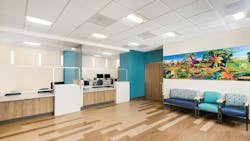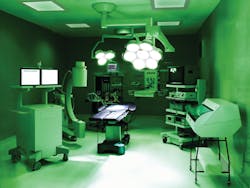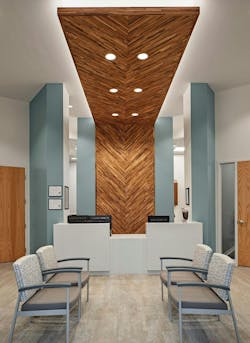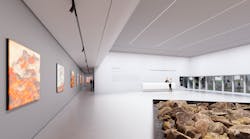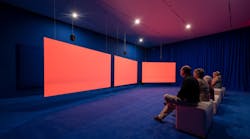In the ever-evolving healthcare landscape, lighting is pivotal in shaping patient experiences and facilitating optimal care delivery. Carefully selected lighting can help improve patient comfort, reduce anxiety and enhance healing.
Healthcare lighting for ambulatory care is designed to provide adequate illumination, minimize glare and ensure patient safety. Ambulatory care facilities are designed to provide same-day medical care to patients who do not require overnight hospitalization. These facilities include urgent care centers, outpatient clinics and surgical centers. Healthcare lighting in ambulatory care facilities is crucial because it affects patient satisfaction, staff productivity and overall efficiency. Proper lighting can improve the accuracy of medical procedures, reduce the risk of falls, and minimize errors.
Illuminating ambulatory surgery centers
Operating rooms in ambulatory surgery centers require lighting solutions that prioritize precision, clarity and safety. One of the ratings to look for during fixture selection in operating-room environments is the MIL-STD-461G rating. Fixtures with MIL-STD-461G ratings pose the lowest likelihood of causing electromagnetic interference (EMI) for both radiated and conducted electromagnetic emissions in surgical suites and surrounding rooms.
Another commonly requested fixture specialization in ambulatory surgery centers is a circuit of green LEDs. Under green color LEDs, medical professionals can clearly see and navigate through the patient’s body with minimally invasive tools without reflection on the monitors. Green LEDs between 500 and 550nm give the human eye the highest level of visual acuity for sharp, sleek details. Additionally, green LEDs provide the highest contrast of red objects such as blood, tissues and veins for operating clarity.
The green LED fixtures are not color-changing RGBW style fixtures — these fixtures use a static green chip on LED boards that tend to be on a separate circuit from the white LEDs. When putting this into practice, during preparation for a procedure, the troffers or a narrow-aperture fixture would be in its white function. Once the procedure starts, the fixtures would turn to their green function so the physician could navigate through the body on the TV monitors without glare. Following the procedure during cleanup, the fixture would be switched to its white function.
While operating rooms have nuanced ratings and listings, common areas of ambulatory surgery centers can use fixtures with general ratings and listings. Panel and troffer fixtures provide general illumination while maintaining efficiency and long life. Downlighting solutions are suitable for corridors, nurse stations and staff areas, combining functionality with aesthetics to create welcoming environments for both patients and staff. A Low Unified Glare Rating (UGR), a wipeable lens and an antimicrobial finish are features to look for when choosing fixtures for common areas.
Lighting for urgent cares and walk-in clinics
There has been a significant push in the United States and Canada to expand the use of urgent care and walk-in clinics. Urgent care and walk-in clinics prioritize accessibility, convenience and efficiency in patient care.
The types of luminaires used in urgent care and walk-in clinics are similar to what might be seen in commercial office spaces. These include troffers and panels, recessed linear, downlights and some special-application luminaires. Specialized fixtures such as surgical troffers are not needed in these types of walk-in clinics. Lighting fixtures with lenses are a suitable solution for these spaces and ensure ease of maintenance and cleaning — two characteristics that are crucial for environments prone to dust accumulation. Low UGR fixtures minimize discomfort and glare, enhancing patient comfort during consultations and procedures.
Architectural lighting solutions add a touch of sophistication to waiting and reception areas. These fixtures not only provide illumination but also contribute to the overall ambiance, creating welcoming spaces for patients seeking immediate care.
Successful implementation of healthcare lighting requires careful consideration of local regulations, lighting controls and maintenance needs. Adhering to industry standards ensures compliance and safety while optimized lighting controls allow for flexibility in adjusting intensity and color temperature based on specific requirements.
Prioritizing the selection of fixtures that provide ease of access for maintenance minimizes disruption to daily operations, ensuring uninterrupted care delivery. By consulting with lighting experts and leveraging specialized fixtures, ambulatory care facilities can create environments that promote healing, comfort and well-being for patients and staff.
Healthcare lighting goes beyond illumination. It serves as a foundation for patient-centered care in ambulatory settings. With well-thought-out lighting design, ambulatory care facilities can elevate the care experience.
